Korzo timeline
Did you stumble through our abode with any regularity over the past 40 years? Or do you have a beautiful story to tell about Korzo? Then please share it with us!
Not all memories have been preserved. To restore some of those missing pieces, we need your help. Send your stories, your pictures, videos or other archival materials to info@korzo.nl and hopefully it’ll find a spot in our 40 Years of Korzo-timeline.
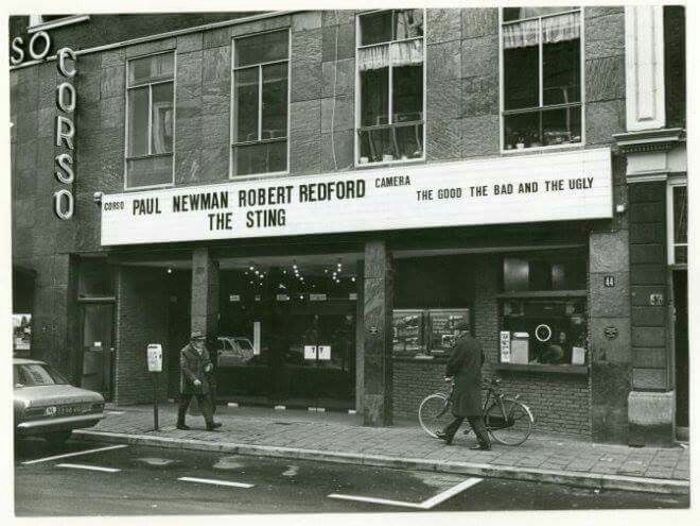
1983 – 1993
Corso Camera movie theater (before 1983)
When exactly the first Corso/Korzo brick was laid wasn’t documented, but it had to have been before 1916. Originally, the building was an old theater complex, with the current Hall as its oldest section.
In 1936, Corso-Camera saw the light of day. Yes, that would be with a ‘c’: Corso would initially be a movie theater. The founders of Corso-Camera are Jewish citizen Aron Shermok, his wife Barcha Lifschutz and companion Petrus Philippus Koolen. They operated the theater until 1941 during World War 2, when antisemitism ran rife. Jewish entrepreneurs became exiled during that year because they weren’t of Aryan descent.
Shermok and his associates were forced to sell their stock in Corso-Camera to their son-in-law H.P.F.E Hamakers. A year later, Aron Shermok was murdered in concentration camp Mauthausen.In 1950, Shermok’s children regained ownership of the theater.
 Photo: Aron Shermok
Photo: Aron Shermok

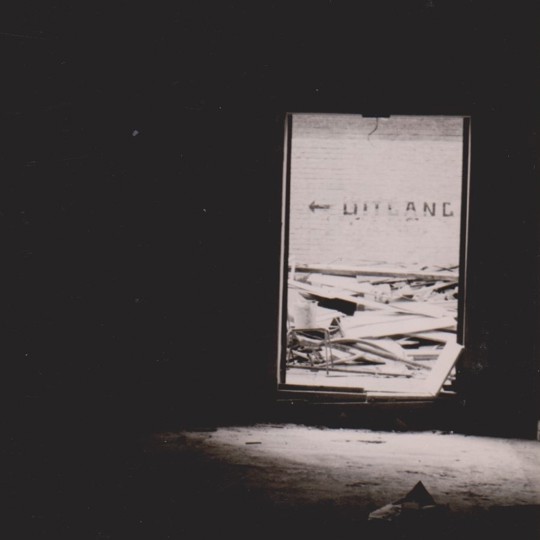
Photo left: Space between the Grote and Kleine Zaal
Photo right: Clearing debris
Korzo is squatted (November 1983)
After a period of recess, Corso’s building had become vacated in 1978. The Prinsestraat is left in a state of neglect and decay: many buildings are emptied and completely abandoned. The government decided to buy the building for half a million guilders, to prevent ‘unwanted developments’.
Despite that, over a longer period, nothing happened in the buildings. Because of overdue maintenance, it wasn’t possible to accommodate the FHAT - Federation of The Hague Amateur Theater. Plans to make it a residential complex with a parking garage also fizzled out. The building remained empty for a total of four years, which obviously left its marks. The floors and chairs were demolished from the Hall, while the water pipes and central heating system broke down due to the frost.
Finally, in November 1983, the complex was given a new lease of life. Students of the K.S.A – Katholieke Sociale Akademie (Catholic Social Academy) – consider the old Corso building as a great potential location for a ‘cultural project’, and open a new theater in The Hague. Their group is bolstered with people from the Theaterwerkplaats Working Group in The Hague, the Haagse Pop Foundation and the Zeebelt Foundation. Together they have taken action: Corso is being squatted!
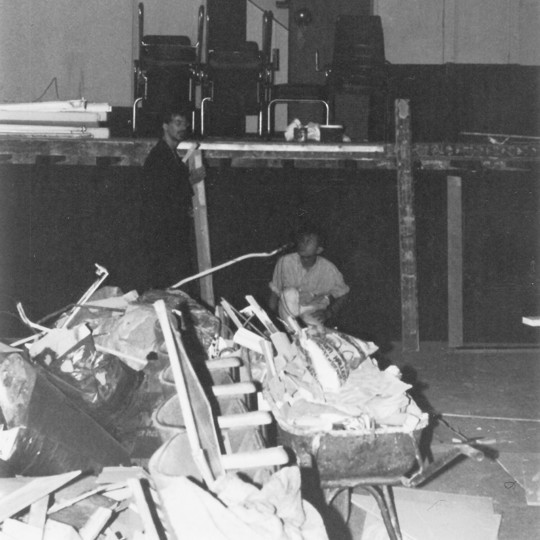

Photos: Clearing debris in the winter of 1983/1984
First manifesto: Corso becomes Korzo (February 1984)
During the three months that followed, squatters worked diligently to make the building 'somewhat presentable'. In February they underlined the new Korzo’s right to exist with an opening event. Aaccording to the squatters, The Hague lacked 'a center for contemporary experimental art expressions', and Korzo would help mend this scarcity within the city’s cultural infrastructure. In the meantime, councilor for culture Guido Halleen (CDA) told the Haagse Courant that he found the squatters' action 'nonsensical'. According to him, the squatters would be better off strengthening ties with existing theaters in The Hague.
On February 12, 1984, the Korzians immediately demonstrated that the city of The Hague desperately needed a hub for culture, art and performance. During the opening program, Corso became Korzo as we know it today, with more than thirty artists, makers and performers taking the stage out of their own volition without pay, including Michèl Waisvisz, Plok, Alex d'Electrique, the Dog-troep, Marcel Cuypers, the Hague percussionists, Brigitte Kaandorp, Volle Melk and many, many more . It became a great success, showered with praise from the attending media, despite the fact that it was freezing inside of the building.

Photo: Poster of the first manifesto
Skating inside of the Main Hall (1985)
In the months after the opening, little programming was done. The building was still in a terrible state and all energy was being put into contacts and plans with the municipality, to hopefully start the renovation work and developing ideas.
Only after the summer of 1984, the complex was fully utilized and the first events started taking place in the months that followed. With performances by the winners of Camaretten and Alex d'Electrique, in addition to festivals such as the Winter Festival, the Spring Festival and the Swing Miks Festival. The highlight may have been the ice skating rink in the Great Hall during an especially cold winter.
It was the first time the Korzo team proved that a theater hall can be so much more than just a place for theater. With a lack of central heating, the temperature in the Main Hall also dropped to sub-zero. With a garden hose and a few nights of frostbite, it became possible to skate in Korzo, a merry gathering punctuated with treats and drinks.
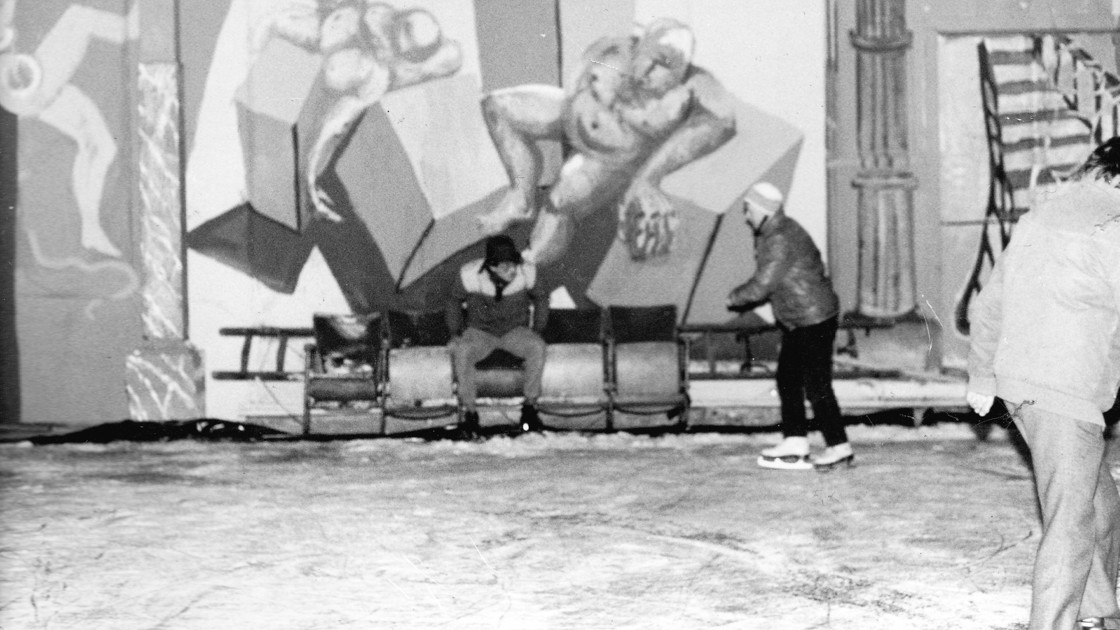
Turning point for Korzo – Building committee started (May 1st, 1986)
May 1986 became a turning point in Korzo's history. The Hague’s government council became a predominantly left-wing affair, and in Jack Verduyn Lunel (Links Den Haag) the city had its new councilor for culture. Korzo was previously just tolerated; but now, there was recognition and celebration. Verduyn Lunel announces at Korzo’s 2,5 year anniversary that the building will be renovated with a budget of more than 2 million guilders. This money was desperately needed to repair leaks, make structural changes and – finally – install a central heating system.
Korzo's right to exist is now also recognized by local politicians. It marked a significant change in municipal policy in The Hague and widespread approval for the new Korzo. But there was work to be done: a building committee was appointed within Korzo to ensure the renovation would run smoothly; 'the May 1st effect' as hardcore Korzians would name it.
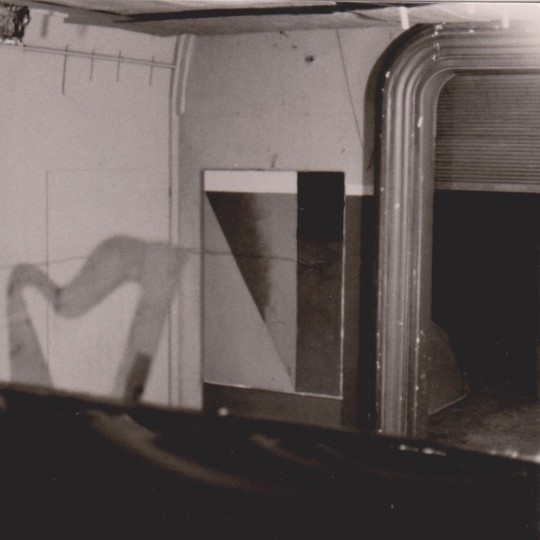
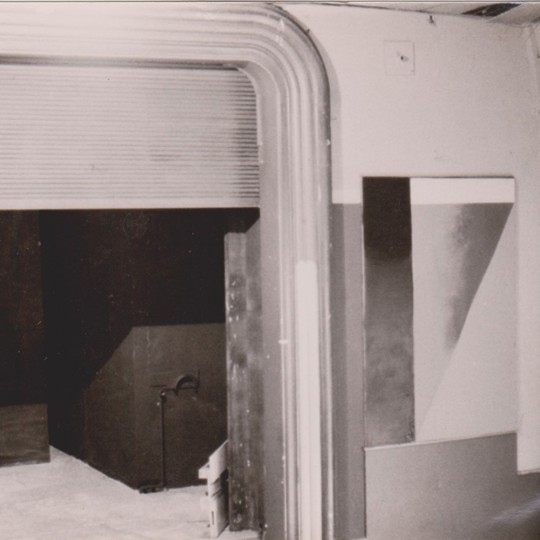
Photos: Grote Zaal before renovation (1985)
Farewell, Main Hall (1987)
Korzo's renovation became very thorough. As a result, The Main Hall, sadly, became a casualty of the great rebuild: the rickety balcony would have to be demolished during the renovation. The refurbishing of Korzo started after the summer of 1987 and persisted all the way up to September 1988. The building was actually completely emptied: only the foundations and the shell remained standing. This meant it was up to the Korzians to completely redesign the building’s interior in 1988.

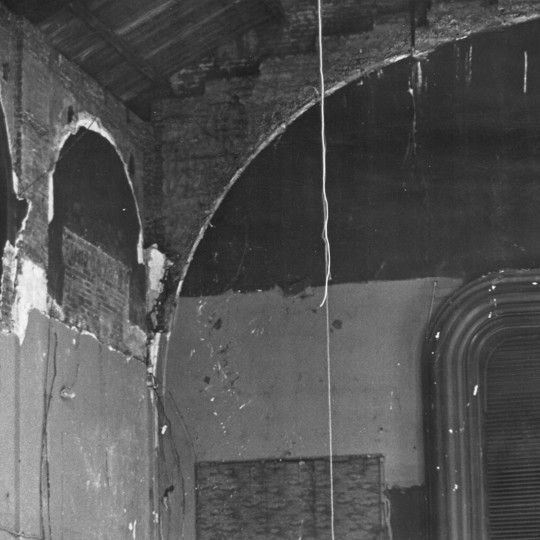
Photos: Demolition Korzo (1987)
Leo Spreksel: Korzo’s first dance programmer (1987)
During the renovation, Korzo found a temporary place in a gymnasium at the Bezemstraat to resume its events. Once the renovation was complete it was time to go full speed ahead again. There was a great uptick in talent and buzz in the world of dance, so a vacancy for a dance programmer – on a voluntary basis – was opened. Leo Spreksel emerged as the best candidate, with the artistic baggage, the large network and the overarching vision to be Korzo's first dance programmer. Korzo became more and more of a fixture within The Hague’s cultural landscape, taking up its own unique position. Bernadette Stokvis focused on mime programming, Hans Hersbach on music and Leo Spreksel on dance. Later, in 1993, Leo and Bernadette respectively became Korzo’s artistic and business directors.
Video: Leo Spreksel on the first moment he saw the Grote Zaal (2023)
First CaDance Festival at Korzo (1992)
The first CaDance was in 1987 by Theater aan het Spui, Korzo took over in 1992.
Korzo distinguished itself in the 1990s with – among other things – the inaugural CaDance festival, an event that was founded in 1987 by Theater aan het Spui – then named Theater aan de Haven – which revolved around showing the best theater and dance performances of the year. Korzo was asked to take over the event because of its dance expertise.The theater was also asked to contribute to the festival, but dance programmer Leo Spreksel saw little point in repeating performances from the past season. Spreksel’s goal was to show new and exciting productions, an ambition that turned out to be a success for both CaDance and Korzo. After two years of steadfast collaboration, Korzo took over the entire festival in 1992. In the 1990s, CaDance became one of The Hague’s beloved staple festivals, contributing immensely to the growth of Korzo.
Korzo falling under structural subsidy for the first time (1993)
Up till 1993, everyone within Korzo’s organization worked either on a voluntary basis or with a small salary. Small additional funding came in through the municipality and small productions are made with subsidies. Korzo is increasingly focused on developing its own productions, which greatly contributed to its own signature and character. A day before the deadline for submitting the Arts Plan to the government (a procedure that gives cultural institutions an opportunity to submit a good plan can potentially secure a four-year subsidy) the Council for Culture contacts Korzo.
Is that Arts Plan ready yet? This wasn’t the case at the time. Luckily, the Council for Culture already viewed Korzo as an important theater and pushed to submit a new plan. In the span of just a single night, said plan was created and written by then-artistic duo Leo Spreksel and Bernadette Stokvis. They wrote extensively about Korzo as a production house for dance, something that didn’t yet exist in The Hague. The Council for Culture saw great value in it and awarded Korzo a four-year subsidy of 200,000 guilders per year. A major game-changer for Korzo, which allowed it to finally produce and organize events on a larger scale.
To be continued...
We will reveal the next part of the timeline soon, so keep an eye on our website!